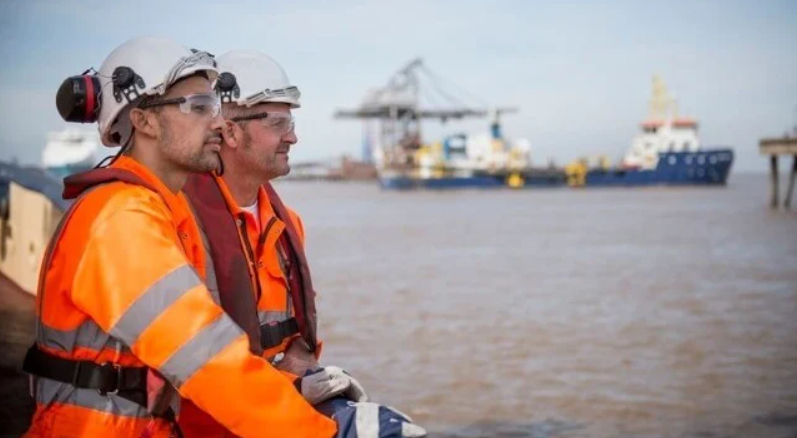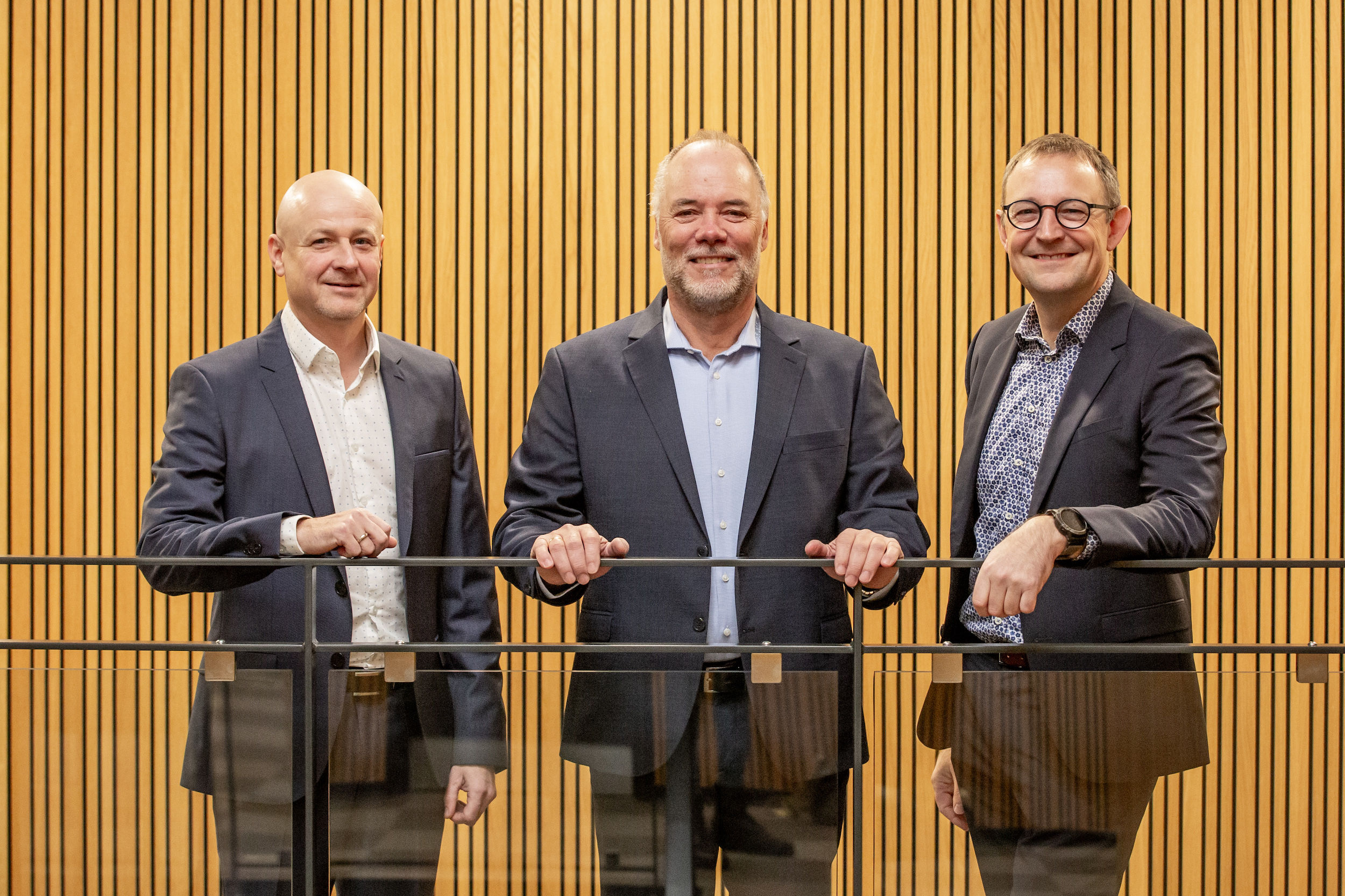Heerema and the Port of Rotterdam Authority are proud to announce that Heerema Marine Contractors’ largest crane vessels, Sleipnir and Thialf have officially switched from using their engines to using shore power.
The successful commissioning of the shore power project is the result of a partnership between Eneco, the Port of Rotterdam Authority, and Heerema with the support of the Gemeente Rotterdam. There is a global demand to reduce our impact on the planet and the partners involved in the shore power project are all dedicated to supporting the energy transition.
Shore power
Shore power enables vessels to switch off their engines and plug into the electrical grid for their energy supply. The connection built by Heerema, Eneco, and the Port of Rotterdam Authority will supply Sleipnir and Thialf with sustainable energy that will originate from wind turbines located on the headland nearby or from another renewable source should it be required.
Koos-Jan van Brouwershaven, Heerema’s CEO said “we are proud to successfully plug in Heerema’s vessel to shore power. This project is the result of excellent collaboration and hard work from everyone involved. Heerema is committed to sustainability and we demonstrated this dedication by becoming Carbon Neutral in 2020. Each year from now to 2026 we have outlined our targeted emission reductions, and by plugging-in shore power, we reduce our overall impact by 5%, equivalent to 5,000 diesel cars, which fulfills our first year’s target! We are looking forward to introducing more sustainability measures to continue this journey.”
The shore power connection has a 20 MW capacity, which is the energy equivalent of around 15,000 homes. As the vessels turn off their engines when connected to shore power, virtually all emissions and particulate matter is prevented because no more marine gas oil or LNG in Sleipnir’s case will be used. This action has direct benefits for local residents with air quality improvements and a reduction in CO2. Also, without the engines running there is a significant reduction in noise nuisance.
When Heerema’s vessels turn off their engines when moored in the port of Rotterdam for a standard repair and maintenance period there is a saving of 15,000 metric tons of CO2, 20 metric tons of particulate matter, 5 metric tons of sulfur, and a significant amount of nitrogen– comparable to the annual emissions of 5,000 diesel cars.
Port of Rotterdam
Rotterdam is making the necessary switch from fossil energy to sustainable energy.
With tens of thousands of ships (almost 30,000) visiting the port of Rotterdam every year, many of which running on diesel engines, there is a need to take action and reduce these emissions. By using shore power, vessels can switch off their diesel generators, saving up to 25,000 liters of diesel per day per ship and improving air quality, and significantly reducing noise.
Arno Bonte, Vice Mayor for Sustainability, Clean Air and Energy Transition of the City of Rotterdam: “Every year, about thirty thousand ships visit the port of Rotterdam. Most of them still use diesel generators, which pollute the air and are a great source of noise nuisance to local residents. Shore power supplies green energy directly from the shore, which allows ships to switch off their diesel generators.
That can save up to 25,000 liters of diesel per day per ship and therefore provides significant environmental benefits. I am very proud, that after providing inland vessels with shore power, now both offshore vessels of Heerema are successfully plugged in at the largest shore power installation of Europe, here in Rotterdam. It means a major step towards a cleaner and future-proof port of Rotterdam”.
At least 90 percent of the offshore, ferries, cruise, and roll-on-roll-off ships and container ships in Rotterdam must use shore power by 2030. This saves the emission of approximately 200,000 tons of CO2 and 2500 tons of nitrogen. This means a major step towards an increasingly cleaner and future-proof port The installation at Heerema’s mooring location at the Calandkanaal is a great milestone that was supported by the municipality of Rotterdam using the Energy Transition Budget (2.0 million).
Allard Castelein, CEO of the Port of Rotterdam Authority said: “The installation of shore power for Heerema vessels on Landtong Rozenburg fits in with the Port Authority’s policy to work together with the companies and the municipality on the port’s energy transition. Shore power plays an important role in this.”
Teamwork
The shore power project first began in 2017, and since the idea was formed the partners have been working together to achieve this sustainable ambition. There was an enormous amount of work that contributed to the successful commissioning of this project. With 16 km of cabling installed onboard the vessels, the construction of an onshore E-house and over 40,000 working hours contributed to shoring power.
Frans van de Noort, Eneco’s Chief Operations Officer said: “We are excited to see the launch of our first shore power project. It is unique that the power is provided by wind turbines just down the road. A truly sustainable way of powering vessels while in port. Collaboration with Heerema, the Municipality of Rotterdam, and the other partners have been key in the successful completion of this project and we are looking forward to further increasing shore power in the port of Rotterdam, through Rotterdam Shore Power BV, our joint venture company with the Port of Rotterdam Authority.”
Eneco, the Port of Rotterdam Authority, and Heerema are all committed to building a sustainable future. Today’s successful commissioning of shore power is a vital step in this journey.


















